If you are one of those people that likes debate, sure you have been sometime arguing about when the old decade ends and the new one begins. Some say this decade ends on December 31, 2019, and the start of the new one begins January 1, 2020. For others, the new decade doesn’t start until January 1, 2021 and the old one concluding on December 31, 2020.
But which is correct? You must know that for a decade to begin, we must start with the year ending with 1 (2021), so we have the whole 2020 to make Internet of Things (IoT) promises a reality.
In these 9 years of IoT we have gone from euphoria to disappointment, from dreams to reality. It has been a tortuous path for some companies (GE Digital) but successful for others (Microsoft).
During this period, we have seen hundreds of IoT start-ups were created around dozens of incubators and accelerators, in spite none of the potential Unicorns in IoT was able to compete against the Industry Giants.
We also have read many good news during the years of the hype and not so good during the years of the disillusionment. Old IoT pioneers have maintained the illusion and hope, but the most sceptical began to leave the ship.
It is educational to read the evolution of IoT through predictions and trends.
It has been an attractive time for IoT event organizers. We become supersaturated but this is also being corrected.
And it has been a time of much networking for IoT influencers, IoT bloggers and IoT speakers.
There have been no idols to follow in the IoT, yes visionaries or successful entrepreneurs but the IoT has not found his Greta Thunberg yet.
Below I include a summary of some of the most relevant news published in this decade that will end of this year.
2011
https://www.postscapes.com/iot-history/
- The term was added to the 2011 annual Gartner Hype Cycle that tracks technology life-cycles from «technology trigger» to «plateau of productivity».
- IPV6 public launch – The new protocol allows for 2128 (approximately 340 undecillion or 340,282,366,920,938,463,463,374,607,431,768,211,456) addresses.
- Cisco, IBM, Ericsson produce large educational and marketing initiatives on the topic.
- Arduino and other hardware platforms mature and make the IoT accessible to DIY’ers taking interest in the topic.
- Acquisitions and VC investment in the space including the IoT platform Pachube being aquired, IoT security company Mocano raising a round of funding and other VC’s taking notice of the industry.
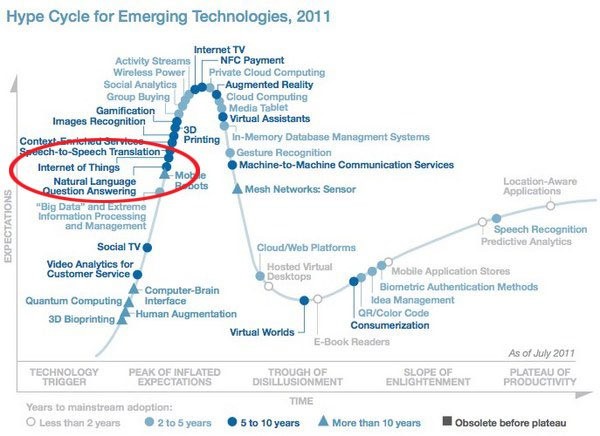
2012
In 2012, ITU-T Y.2060 TELECOMMUNICATION STANDARDIZATION SECTOR published this recommendation that provides an overview of the Internet of things (IoT) with the main objective of highlighting this important area for future standardization.
More specifically, this Recommendation covered the following:
- IoT-related terms and definitions
- concept and scope of the IoT
- characteristics of the IoT
- high-level requirements of the IoT
- IoT reference models.
2012 was the year in which many conferences series bring internationally leading researcher and practitioners from both academia and industry together to facilitate the sharing of applications, research results, and knowledge.
2013
In 2013, the Internet of Things arrived and so discussions massive security issues. We envisaged the huge potential benefits to lifestyles and businesses but … with great opportunity comes great responsibility. Along with its conveniences, the IoT unveiled unprecedented security challenges: in data privacy, safety, governance and trust.
I launched my own company OIES IoT Consulting. For MIT, 2013 was the year of the Internet of Things illusion.
2014
The term IoT hit the Gartner Hype Cycle‘s «Peak of Inflated Expectations» in 2014.
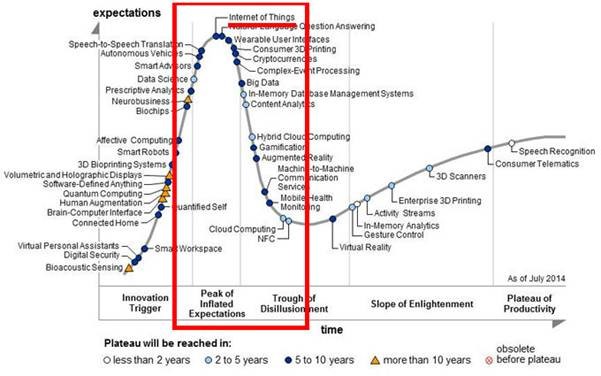
2015
The 10 most relevant news in IoT 2015
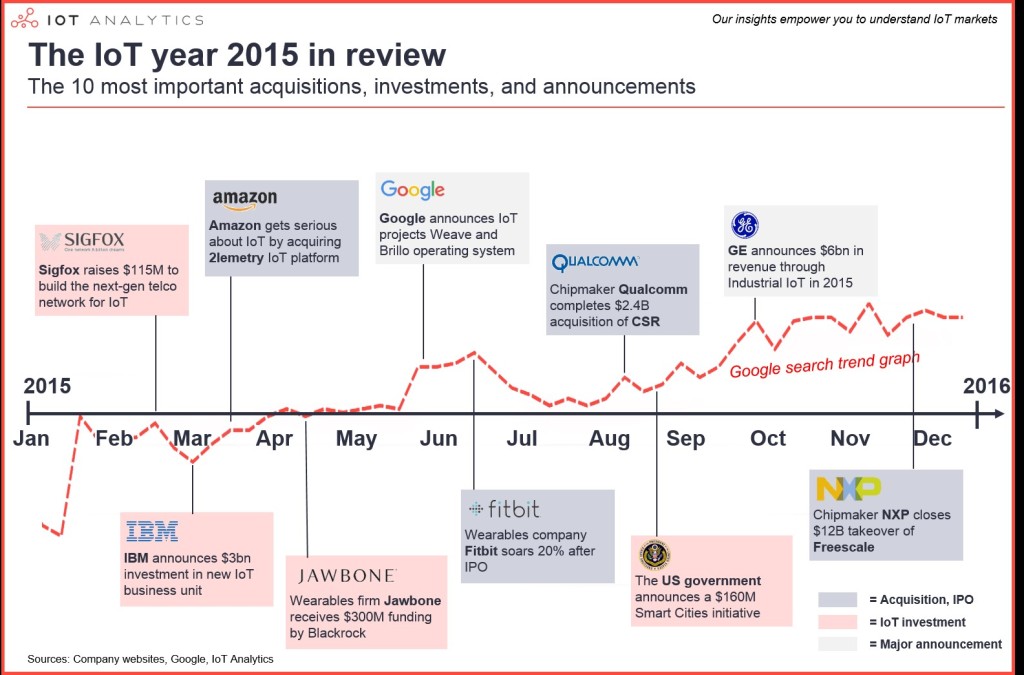
2016
Los grandes hitos de Internet de las Cosas en 2016

IoT 2016 in review: The 8 most relevant IoT developments of the year
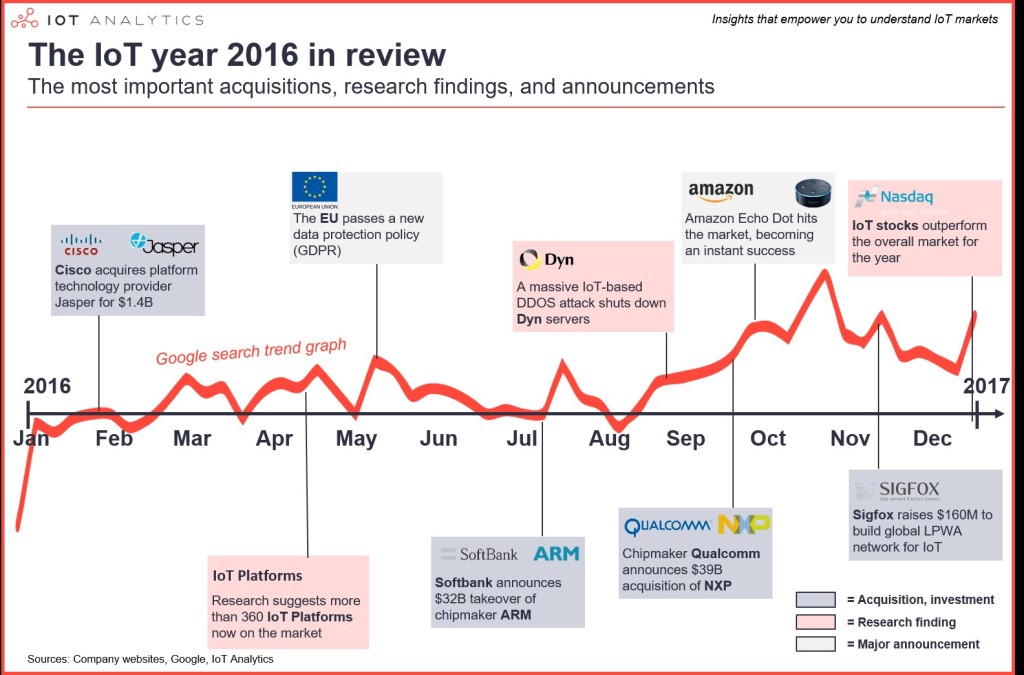
2017
The term IoT hit the Gartner Hype Cycle‘s «Peak of Inflated Expectations» in 2014.
IoT 2017 in Review: The 10 Most Relevant IoT Developments of the Year
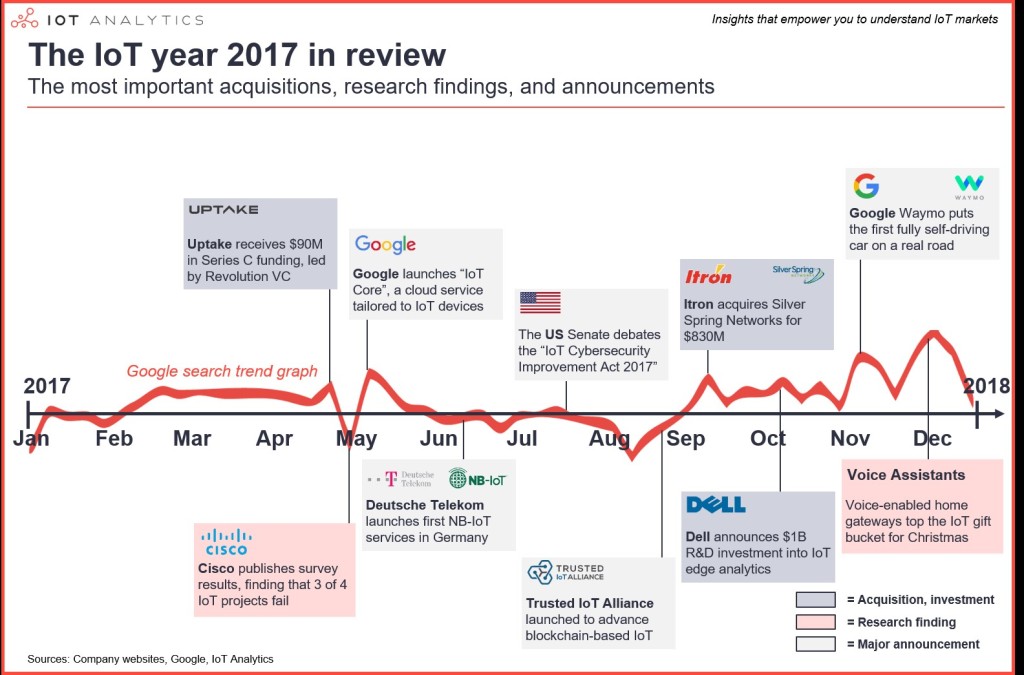
La explosión de IoT será en el 2017
Barómetro Vodafone IoT 2017/18 Resumen ejecutivo

2018
IoT 2018 in Review: The 10 Most Relevant IoT Developments of the Year
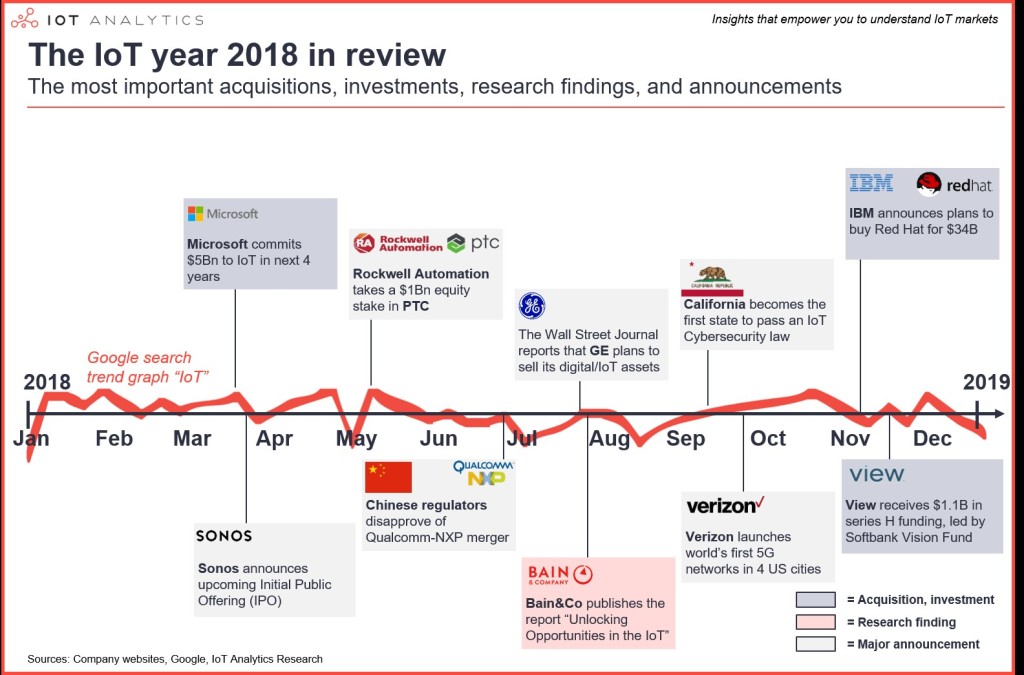
IoT 2018: The Top 10 Articles of the Year
IoT 2018 – the next stage: the IoT of integration, value and action – Moving from a narrative of IoT and smart to a narrative of value. As IoT technology moves to the edge, business (re)centralizes. IoT spending 2018 – approaching the $800 billion mark
2019
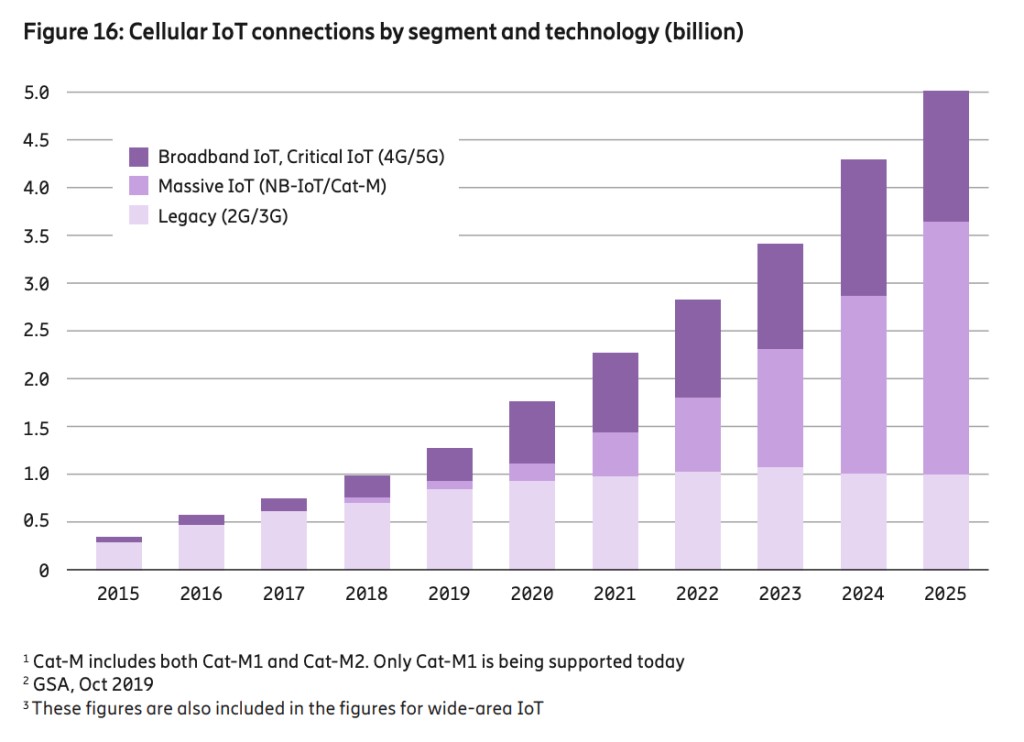
IoT news of the week for Nov. 29, 2019
- Asset tracking is the killer app for LPWAN
- Qualcomm and Siemens create 5G factory Network
2020 – What we can expect
Luckily, the hype has disappeared and the IoT has evolved and has become more real. In 2020 we will see IoT is developing at a fast pace because the maturity phase of IoT has just begun.
As I said in my post “2020 IoT Trends and Predictions: Be prepared for the IoT Tsunami”
Expect a 2020 year of less IoT technology news and more business news.
Summary
Whether you are one of those who believe that a new decade has started on January 1, 2020, as if you are sure there are still 365 days ahead to finish it, I hope this article has helped you to know a little more or to remember how intensely we have lived the childhood of the Internet of Things. IoT adolescence, a stage in life always complicated but unforgettable is about to begin. Long live the IoT.